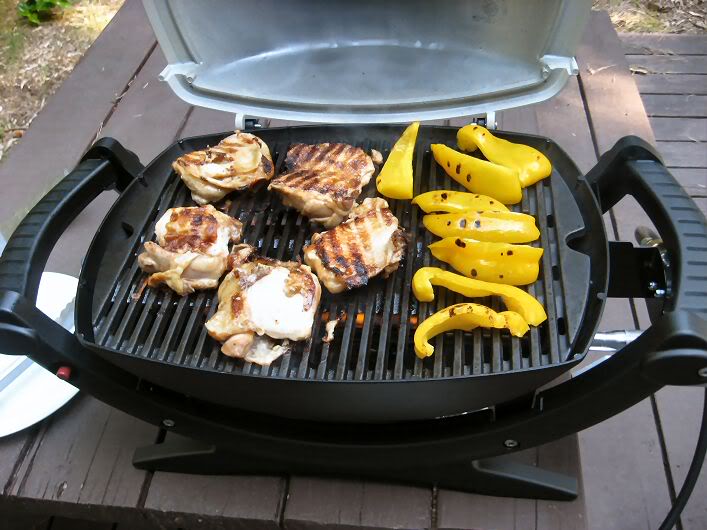T-Al,
Back in my restaurant-inspecting days I spent quality time with one of these babies ( A Cooper Atkins Waterproof Thermocouple, about $250, but you'll only wait 30 seconds, max, for a read):
Cooper Atkins Waterproof Thermocouple w / DuraNeedle Probe 35132-N | ACityDiscount Restaurant Equipment
At home we have one of these (Raytek FoodPro Plus, $199 online, we got it free at a party; it's got infrared (useless for interior of foods) and a probe):
Amazon.com: Raytek foodpro plus US Home Improvement
And one of these (Pyrex thermometer, $20 at your local big box home goods store):
Amazon.com: Oneida 31161 Digital Thermometer & Timer: Home Improvement
The Pyrex is fine for roasts, turkey, and other big pieces of meat that are in the oven or on the grill for long periods of time. You insert the metal probe in the meat, stick the receiver unit onto the stove or someplace cool (it's a magnet) and preset the temperature you want to pull the meat out at; when it beeps, your food is done. It's great for Thanksgiving turkey, but a bit too slow for BBQ.
The Cooper Atkins is great, easy to use, very fast (near-instant for most things, up to twenty or thirty seconds for some things) but not cheap.
We've been happy with the RayTek and it's the instant-read thermometer we use at home for grilling. Its user interface is not as good as the CooperAtkins and I don't like the fact that my hand is right on top of the probe (not comfy in a BBQ). If we hadn't gotten it for free and we were going to spend money on a thermometer, I'd buy a low-cost CooperAtkins Thermocouple (you can get economy ones for under $200) because the probe is attached with a metal cord and it's a lot easier to get some distance between your hand and the heat source when you're measuring temps on cooked foods.
The other thermometer I used a lot was a "lollipop" style like one of these:
Cooper-Atkins DPS300-01 Swivel Head Digital Thermometer
They're also called digital pocket test thermometers and you can get them at any restaurant supply store for about $20. The second thermometer you posted a picture of looks like one of these, but I'd take the one you've got with you to a restaurant supply store and see if it's the same thing.
Given that you've been pretty unhappy with the ones you've got so far, this is the one I'd recommend. It's easy to use, cheap, and small. And if it still doesn't move quickly enough, you've only spent $20 on it. I can say that these types of little pocket test thermometers are what most of the chefs and line cooks in our town use, even at the really ritzy restaurants. They take a minute or so, and do better if you slide the probe in parallel to the long surface of the meat (ie, sideways, not top-down) -- it seems to give a more consistent read.
Finally, you need to know where your temperature-taking point on the probe is. For most digital instant-reads, it's at the very tip. For some digital instant-reads, there's a dimple about 1/2 a centimeter up the side of the probe -- that's where the temperature is taken, so if it's not in the food, you won't get a good temp or a quick one. Most dial-type thermometers also use the dimple method.
And there it is, probably more than you wanted to know, if you didn't know it already.










